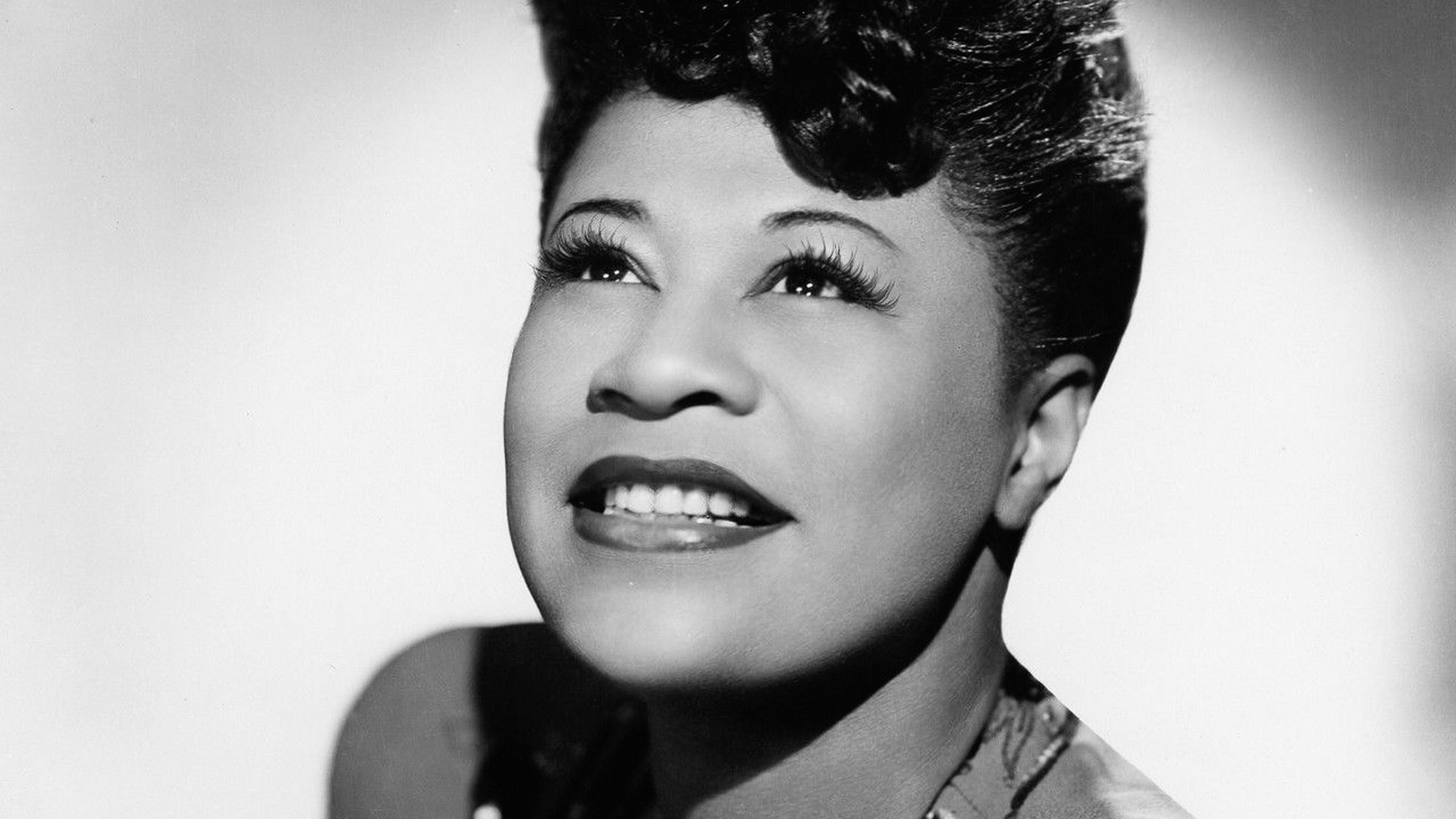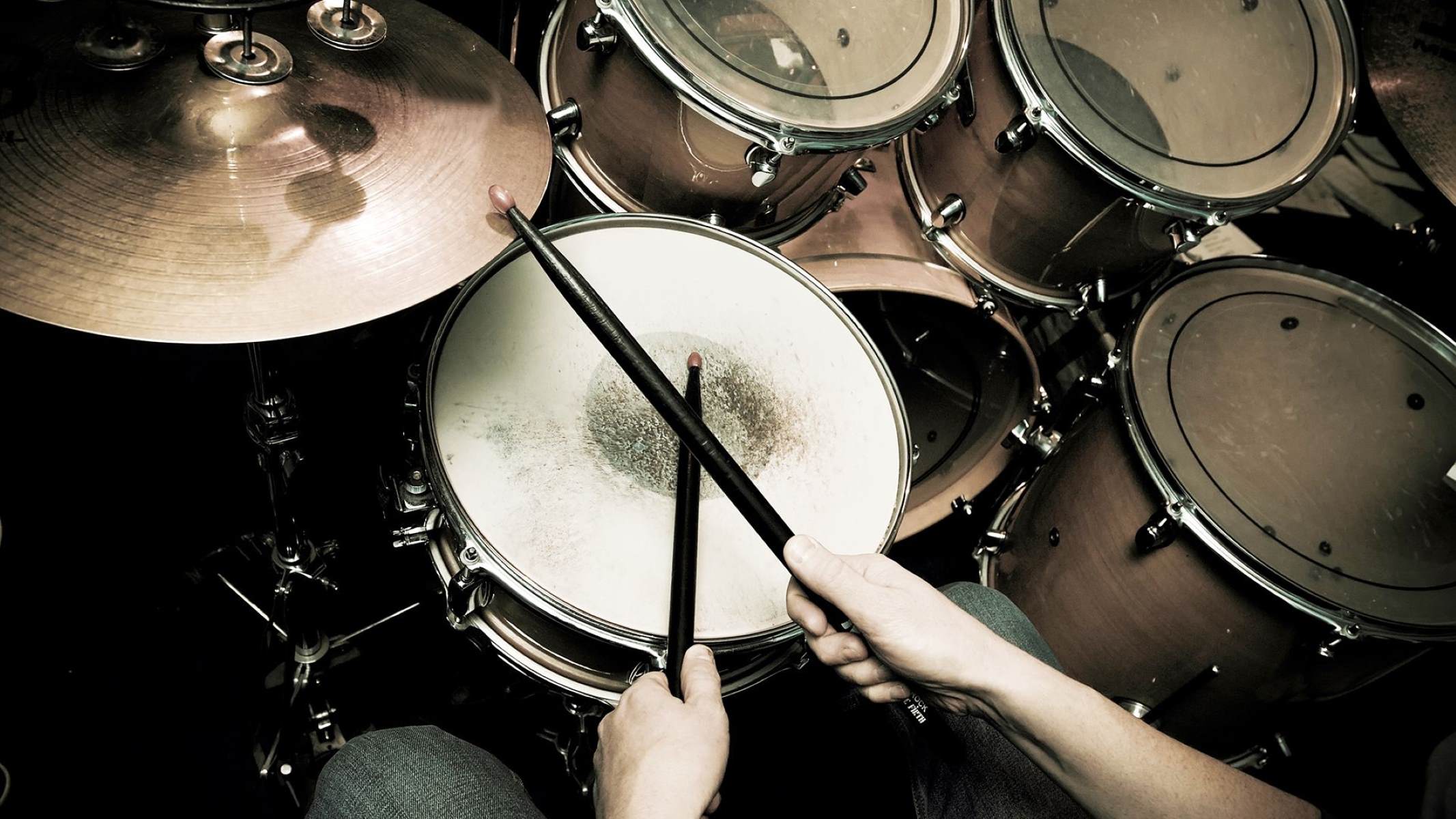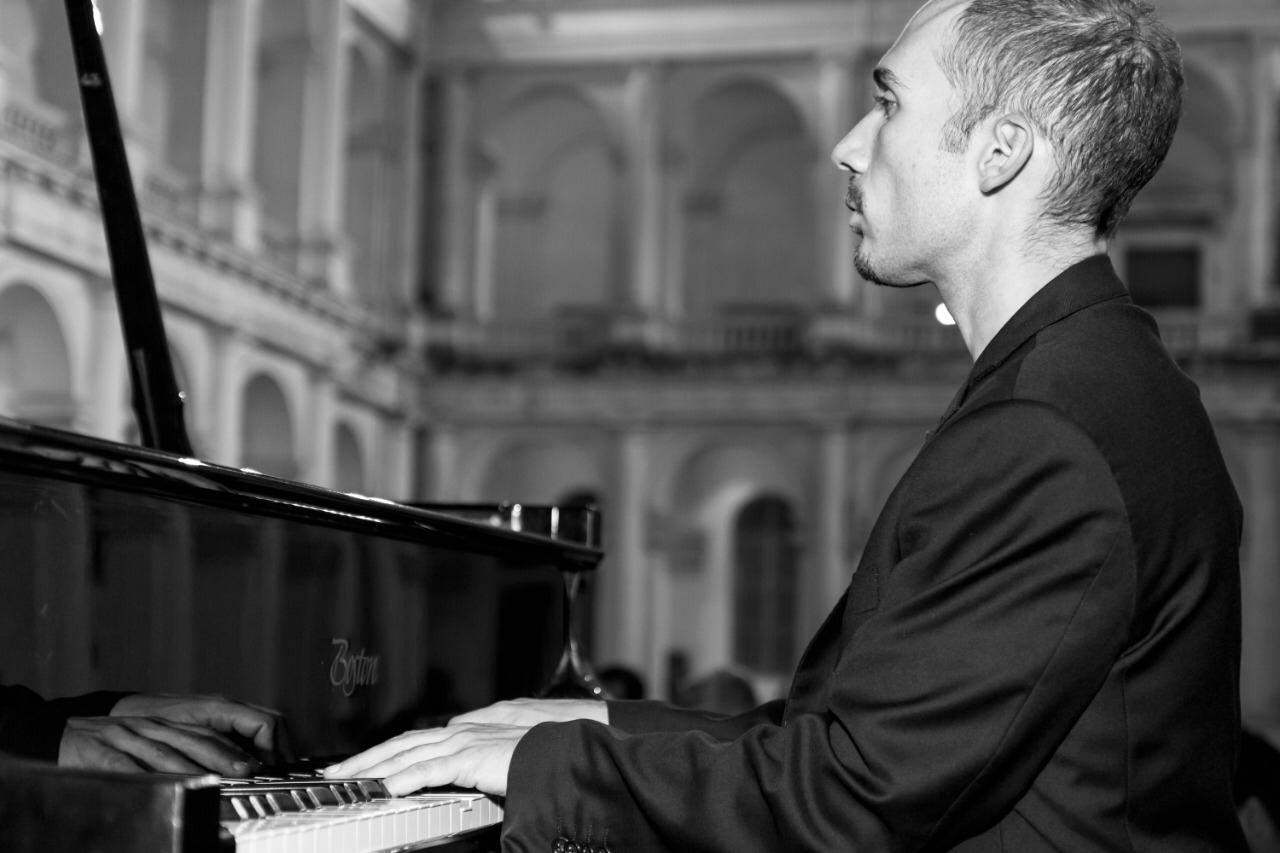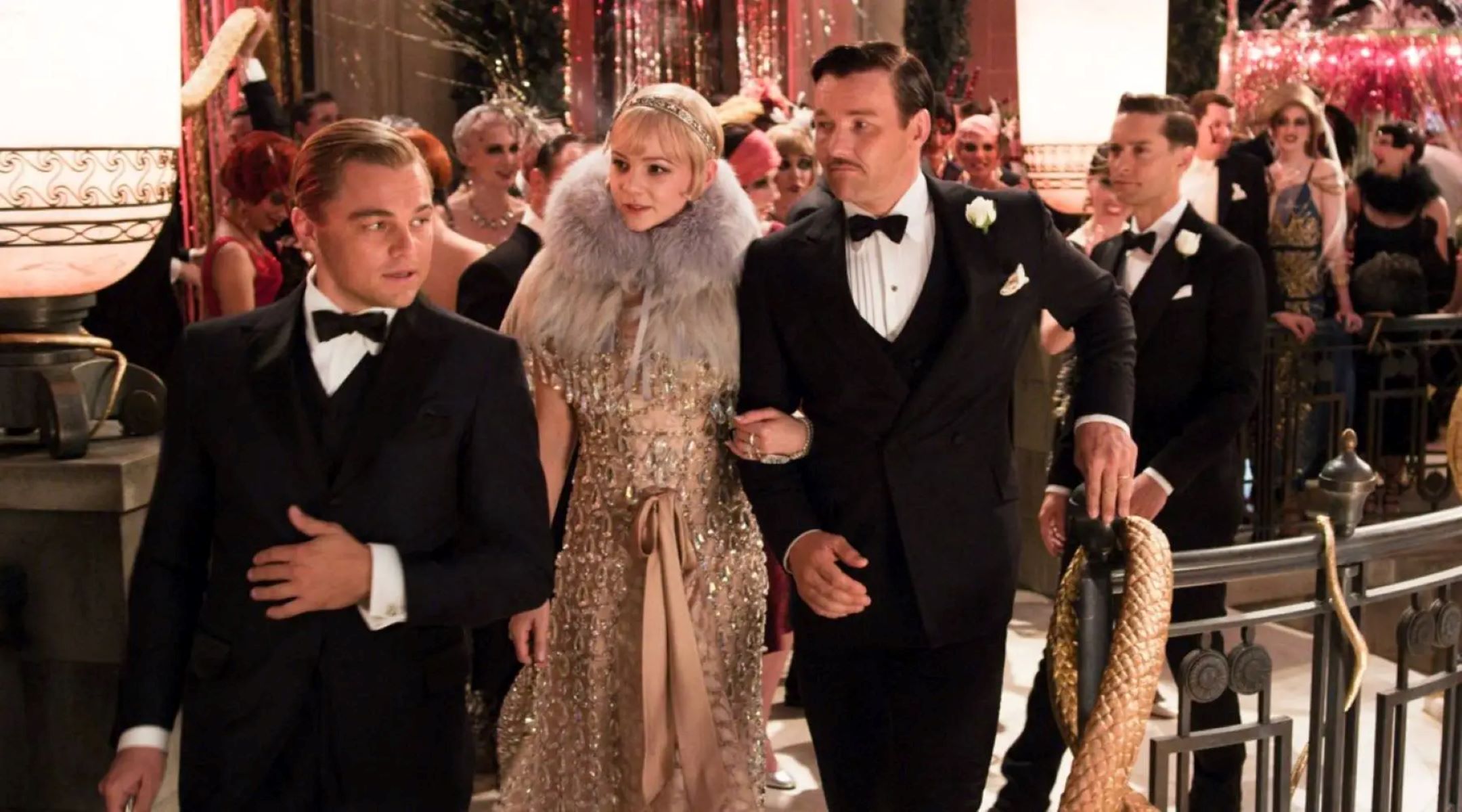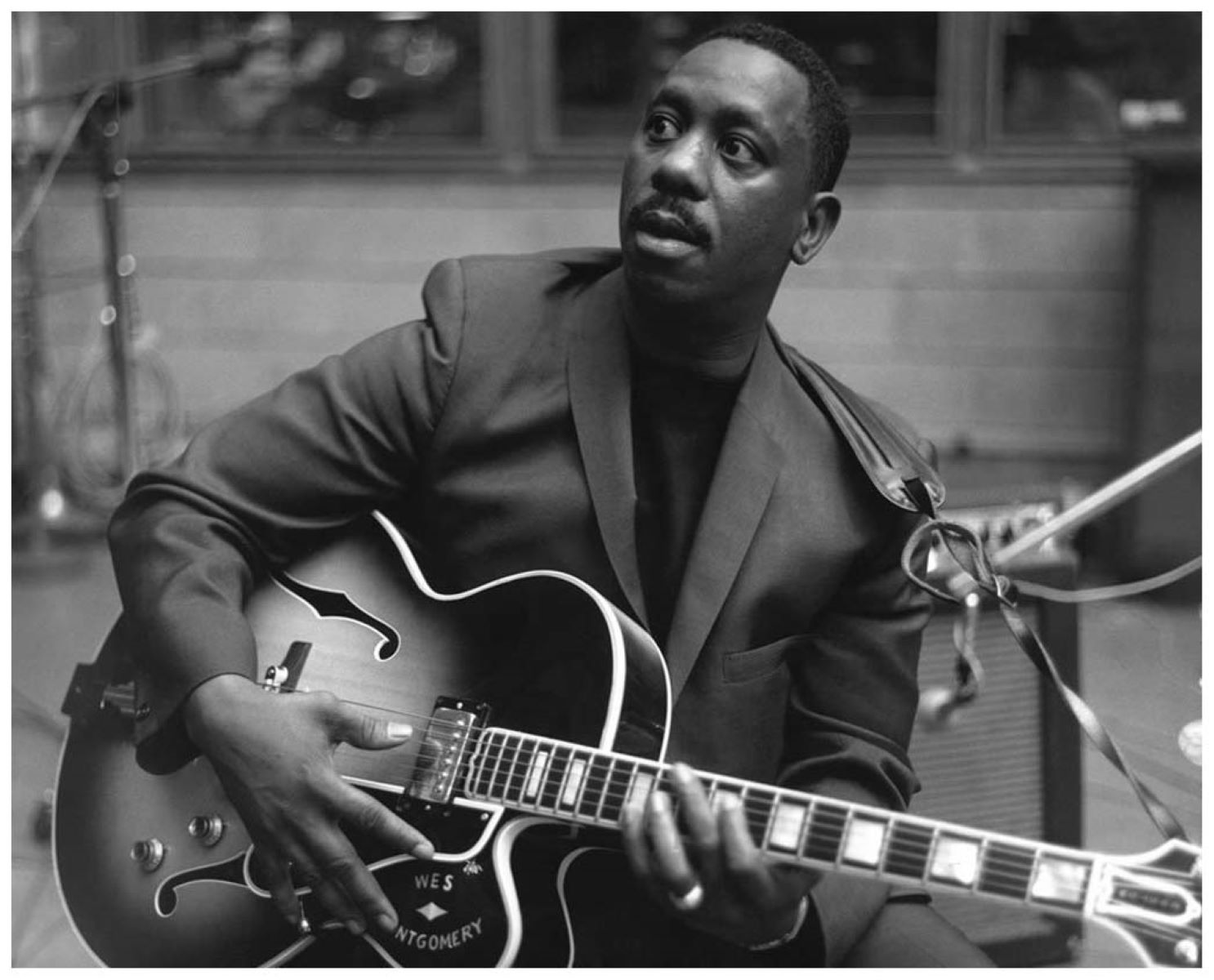

Jazz
Who Coined The Term Jazz Age
Modified: February 24, 2024
Discover who coined the term "Jazz Age" and dive into the vibrant history of this influential era in music and culture.
(Many of the links in this article redirect to a specific reviewed product. Your purchase of these products through affiliate links helps to generate commission for AudioLover.com, at no extra cost. Learn more)
Table of Contents
Introduction
The Jazz Age, also known as the Roaring Twenties, was a period of cultural revolution that took place in the United States in the 1920s. It was a time of rapid societal change and innovation, marked by the rise of jazz music, the emergence of the modern flapper, and a general sense of rebellion against traditional social norms.
The term “Jazz Age” was coined by American writer F. Scott Fitzgerald in his novel “The Great Gatsby,” which depicted the vibrant and hedonistic lifestyles of the era’s elite. However, the Jazz Age went beyond the confines of Fitzgerald’s fictional world and became a defining characteristic of the entire decade.
The Jazz Age was a time of great optimism and prosperity, fueled by technological advancements, economic growth, and a newfound sense of freedom. It was also a period of significant social and cultural upheaval, as traditional values clashed with the emerging modern ideals.
Jazz music played a central role in shaping the cultural landscape of the era. Its lively rhythms, improvisation, and syncopation reflected the vibrant energy and sense of liberation that characterized the Jazz Age. Jazz was not only an art form but also a symbol of rebellion and a means of expression for marginalized communities, particularly African Americans.
With its roots in African American communities in New Orleans, jazz quickly spread across the country and captivated audiences of all backgrounds. It became the soundtrack of the era, with dance halls and speakeasies filled with people dancing to the infectious rhythms of jazz bands.
The Jazz Age also brought about significant changes in fashion, with the rise of the flapper style. Flappers were young women who defied societal norms by embracing short skirts, bobbed hair, and a carefree attitude. They challenged traditional gender roles and embraced a lifestyle centered around parties, dancing, and social liberation.
Beyond music and fashion, the Jazz Age had a profound impact on literature, art, and popular culture. It was a time of artistic experimentation and innovation, with writers such as Ernest Hemingway, T.S. Eliot, and Langston Hughes pushing the boundaries of traditional storytelling. The art world also saw a shift towards modernism, with artists like Georgia O’Keeffe and Salvador Dali challenging conventional artistic norms.
While the Jazz Age was a time of great cultural vitality and creative expression, it was not without its controversies and critics. The decade witnessed a stark divide between the rich and the poor, with the excesses of the wealthy elite contrasting sharply with the struggles of the working class. Prohibition, the banning of alcohol, led to the rise of illegal speakeasies and organized crime.
Despite its flaws, the Jazz Age remains a fascinating and influential period in American history. Its impact on music, literature, and art continues to resonate to this day, and its legacy can be seen in the vibrant and diverse cultural landscape of the 21st century.
Definition of the Jazz Age
The Jazz Age, also known as the Roaring Twenties, refers to a period in American history during the 1920s when jazz music, along with its associated culture and ideology, played a significant role in shaping society. The term “Jazz Age” was popularized by the American writer F. Scott Fitzgerald in his novel “The Great Gatsby,” which depicted the extravagant and decadent lifestyles of the wealthy elite of that era.
At its core, the Jazz Age represented a break from the rigid social customs and values that characterized the previous era. It was a time of rebellion against traditional norms, a celebration of youth, and a rejection of the strict moral codes of the Victorian era. The Jazz Age embraced a sense of liberation, experimentation, and a desire for freedom and self-expression.
Jazz music, with its syncopated rhythms, improvisation, and energetic style, served as the soundtrack of the Jazz Age. It originated in the African American communities of New Orleans and found widespread popularity among people of all backgrounds. The music of jazz embodied the spirit of the era, marking a departure from the structured and formal styles that had dominated the music scene before.
However, the term “Jazz Age” is not limited to just the music. It encompasses the entire cultural and social milieu of the 1920s. The Jazz Age was characterized by a newfound sense of mobility and urbanization, with young people flocking to cities in search of excitement and opportunity. The rise of the flapper culture, with its bold fashion choices and liberated attitudes, was an integral part of the Jazz Age.
In addition to its cultural impact, the Jazz Age was also a period of significant economic growth and technological advancements. The United States experienced a decade of prosperity and consumerism, with the stock market booming and the emergence of new industries. This economic prosperity contributed to the rise of a wealthy elite and created a stark contrast between the rich and the poor.
Overall, the Jazz Age represents a dynamic and transformative period in American history. It was a time of social, cultural, and artistic change that continues to influence and inspire people to this day. The Jazz Age encapsulated the spirit of the 1920s, a decade marked by excitement, innovation, and a desire to break free from the constraints of the past.
Origins and Evolution of the Jazz Age
The origins of the Jazz Age can be traced back to the early 20th century, specifically to the African American communities in the city of New Orleans, Louisiana. It was in this vibrant cultural melting pot that jazz music began to take shape, drawing influences from African rhythms, European harmonies, and American blues traditions.
The fusion of these diverse musical elements resulted in a unique and lively sound that became synonymous with the Jazz Age. Artists such as Jelly Roll Morton, Louis Armstrong, and King Oliver were instrumental in popularizing jazz and taking it beyond the confines of New Orleans.
As jazz spread across the United States, it underwent significant evolution and experimentation. In cities like Chicago and New York, jazz bands flourished and developed their distinct styles. The emergence of big band jazz, characterized by larger ensembles with brass and reed instruments, brought a new level of sophistication and energy to the genre. Duke Ellington, Benny Goodman, and Count Basie were among the prominent figures who expanded the horizons of jazz during this period.
Furthermore, the Jazz Age coincided with the Prohibition era, a time when the production and sale of alcoholic beverages were banned in the United States. This led to the rise of illegal speakeasies, where jazz music thrived and became synonymous with the rebellious spirit of the time. Jazz musicians found themselves performing in these underground establishments, fostering a sense of intimacy and excitement among the patrons.
With the advent of recording technology and the growing popularity of radio, jazz music was able to reach a wider audience. Recordings by notable artists brought the infectious rhythms and melodies of jazz into homes across the country, further cementing its status as a defining sound of the era.
While jazz music was the cornerstone of the Jazz Age, its influence extended beyond the realm of music. The cultural impact of jazz extended to dance, fashion, and social behavior. The energetic and syncopated rhythms of jazz provided the soundtrack for dance crazes such as the Charleston and the Black Bottom, which became synonymous with the era.
Moreover, the Jazz Age brought about a shift in fashion and popular culture. The rise of the flapper, with her short hair, knee-length dresses, and androgynous style, challenged societal norms and represented a new kind of independent and liberated woman. The flapper culture embraced a carefree and hedonistic lifestyle, enjoying the excitement and freedom of the Jazz Age.
In summary, the Jazz Age originated in the African American communities of New Orleans and evolved into a cultural phenomenon that swept the nation. Jazz music became the vibrant and expressive soundtrack of the era, while its social and cultural impact extended to fashion, dance, and popular culture. The Jazz Age represented a break from tradition and a celebration of individuality and self-expression, leaving an indelible mark on American history.
Cultural and Social Significance of the Jazz Age
The Jazz Age, with its vibrant culture and dynamic music, had a profound impact on American society during the 1920s. It represented a pivotal shift in cultural norms and social attitudes, leaving a lasting influence that can still be felt today.
One of the key cultural significances of the Jazz Age was its role in breaking down barriers and promoting racial integration. Jazz music, with its African American roots, served as a powerful force in bringing communities together and challenging racial prejudice. It provided a common ground for people of different backgrounds to celebrate and appreciate the art form, paving the way for interracial collaboration and acceptance.
Furthermore, the Jazz Age marked a significant shift in the perception of women and gender roles. The emergence of the flapper culture challenged traditional expectations placed upon women, giving rise to a new kind of independent and liberated woman. Flappers rejected societal norms, embracing a lifestyle centered around pleasure, fashion, and social liberation. The flapper movement represented a significant step towards gender equality and the empowerment of women.
The Jazz Age also played a vital role in shaping the American identity and influencing popular culture. Jazz music became synonymous with the vitality, energy, and innovation of the era. It represented a departure from the traditional and conservative values of the past, marking a shift towards a more progressive and open-minded society. The infectious rhythms and vibrant melodies of jazz permeated not only the music scene but also literature, fashion, art, and film.
Moreover, the Jazz Age was characterized by a spirit of rebellion and defiance against Prohibition, the ban on alcohol. Speakeasies, illegal bars where people gathered to drink and listen to jazz, became symbols of resistance and a thriving underground culture. The defiance of Prohibition laws and the popularity of speakeasies reflected a society that was unafraid to challenge authority and seek pleasure in the face of adversity.
The cultural and social significance of the Jazz Age extended beyond the United States, influencing and inspiring artists, musicians, and thinkers around the world. The era served as a catalyst for artistic and intellectual movements, fueling the rise of modernism in literature, art, and design.
In summary, the Jazz Age had a profound cultural and social impact on American society. It challenged traditional norms, broke down racial barriers, empowered women, and embraced a spirit of rebellion and innovation. The Jazz Age marked a transformative period in American history, leaving a legacy of cultural vibrancy, social progress, and artistic expression that continues to resonate in the 21st century.
Popular Figures and Artists of the Jazz Age
The Jazz Age was marked by the emergence of immensely talented and influential musicians, performers, and cultural icons who helped shape the era and define its distinct character. These popular figures and artists played a crucial role in popularizing jazz music and influencing the cultural landscape of the time.
Louis Armstrong, known as “Satchmo,” was one of the most prominent figures of the Jazz Age. His virtuosic trumpet playing and charismatic stage presence made him a jazz icon. Armstrong’s innovative improvisation skills and distinctive gravelly voice revolutionized jazz, elevating it to new heights and inspiring countless musicians.
Duke Ellington, renowned as a composer, bandleader, and pianist, was another influential figure of the Jazz Age. With his orchestra, “Duke Ellington and His Famous Orchestra,” he composed and performed iconic jazz standards, such as “Take the ‘A’ Train” and “Mood Indigo.” Ellington’s sophisticated and nuanced approach to jazz helped redefine the genre and cemented his place as one of the greatest jazz musicians of all time.
Bessie Smith, often referred to as the “Empress of the Blues,” was a trailblazing African American blues singer. Her powerful voice and emotionally charged performances captivated audiences, and her recordings became best-sellers during the Jazz Age. Smith’s contributions to blues and her ability to convey the struggles and triumphs of African American life made her an influential figure in both jazz and popular music.
The Jazz Age also witnessed the rise of influential jazz bands and orchestras. Count Basie and His Orchestra, known for their swing style, gained popularity with their energetic performances and infectious rhythms. Benny Goodman, often referred to as the “King of Swing,” was a clarinetist and bandleader who popularized swing music and brought it into the mainstream.
In addition to jazz musicians, several other popular figures emerged during the Jazz Age. Josephine Baker, an African American dancer, singer, and actress, captivated audiences in France and later in the United States with her provocative performances and charismatic stage presence. Baker symbolized the cultural exchange between America and Europe, and she played a significant role in breaking down racial barriers.
Iconic writers and poets also contributed to the cultural fabric of the Jazz Age. F. Scott Fitzgerald, author of “The Great Gatsby,” captured the essence of the era and became an embodiment of the Roaring Twenties with his depiction of lavish parties and the pursuit of the American Dream. Langston Hughes, a pivotal figure of the Harlem Renaissance, used his poetry to celebrate African American culture and challenge racial inequality.
Overall, the Jazz Age produced a myriad of talented and influential figures who left an indelible mark on the cultural landscape. Their contributions to music, literature, and performance not only defined the era but also continue to influence and inspire artists and audiences to this day.
Influence on Music, Literature, and Art
The Jazz Age had a profound influence on various artistic disciplines, leaving an indelible impact on music, literature, and art. This cultural revolution sparked a wave of creativity and innovation that reshaped these fields, propelling them towards new frontiers.
One of the most significant influences of the Jazz Age was on the realm of music. Jazz, with its vibrant rhythms and improvisational nature, revolutionized the music scene and became a symbol of the era’s cultural shift. It influenced not only jazz artists but also musicians from other genres, helping to shape the evolving landscape of popular music.
Jazz’s impact extended beyond the music itself. It influenced the way in which music was performed and listened to, opening up new possibilities for experimentation and self-expression. Improvisation, a key element of jazz, began to seep into other genres, allowing musicians to explore new paths and break traditional boundaries.
In literature, the Jazz Age gave rise to a wave of creativity and artistic exploration. Writers such as F. Scott Fitzgerald, Ernest Hemingway, and T.S. Eliot captured the spirit of the era in their works, depicting the excesses, glamour, and disillusionment of the time. These authors used their writings to examine the changing social dynamics and the profound impact of the Jazz Age on American society.
The Jazz Age also sparked a cultural movement known as the Harlem Renaissance, which celebrated African American art and literature. Figures such as Langston Hughes, Zora Neale Hurston, and Claude McKay used their works to explore and express the African American experience during this transformative era. Their contributions not only enriched the literary landscape but also challenged racial stereotypes and fought for racial equality.
The impact of the Jazz Age can also be seen in the field of visual art. The era witnessed a shift towards modernism, with artists challenging traditional artistic norms and exploring new styles and techniques. The vibrant and dynamic energy of jazz inspired artistic movements such as Cubism, Futurism, and Art Deco, which sought to capture the spirit of the Jazz Age visually.
Artists like Georgia O’Keeffe, Stuart Davis, and Salvador Dali drew inspiration from the vitality and rhythm of jazz music, translating it onto the canvas. They embraced bold colors, geometric shapes, and abstract forms, reflecting the vibrancy and experimentation of the era.
In summary, the Jazz Age left an enduring influence on the realms of music, literature, and art. It revolutionized the music scene, inspired literary movements, and invigorated artistic expression. The Jazz Age was a time of creative exploration and cultural vibrancy that continues to shape and inspire artistic pursuits in the modern world.
Controversies and Critics of the Jazz Age
While the Jazz Age was a time of cultural revolution and artistic innovation, it was not without its controversies and critics. The rapid social change, decadence, and perceived moral decay of the era sparked backlash and criticism from various factions of society.
One of the main criticisms of the Jazz Age was its association with hedonism and excess. The wealth and prosperity of the Roaring Twenties led to a lifestyle of consumption and indulgence, which was seen by some as frivolous and morally corrupt. Critics argued that the emphasis on pleasure and materialism undermined traditional values and led to a loss of moral compass.
Another source of controversy was prohibition, the ban on the sale and consumption of alcohol, which was in effect during the Jazz Age. While it was intended to promote temperance, it gave rise to a flourishing underground culture of speakeasies and illegal alcohol production. Critics of the Jazz Age condemned the disregard for the law and moral principles, arguing that it fostered a culture of lawlessness and vice.
The Jazz Age also received criticism for its perceived racial and social implications. While jazz music originated in African American communities in New Orleans, it gained popularity among people of all backgrounds. However, this cultural fusion and the rise of African American artists and figures caused unease and backlash from those who held prejudiced views. Some critics dismissed jazz as inferior and vulgar, viewing it as a threat to the moral fabric of society.
Furthermore, the economic disparities of the Jazz Age were a subject of criticism. While the wealthy elite indulged in excess and extravagance, the working class faced economic hardships and inequality. The stark contrast between the rich and the poor, particularly during the Great Depression that followed the Jazz Age, fueled social tension and led to criticisms of the era’s unequal distribution of wealth.
Additionally, the Jazz Age faced criticism and resistance from more conservative elements of society, who saw the cultural changes and newfound freedoms as a threat to traditional values and social order. They decried the erosion of traditional gender roles and moral standards, viewing the era as a decline in societal standards.
Despite these controversies and critics, the Jazz Age left an indelible mark on American culture and continues to be celebrated for its artistic achievements and cultural significance. It represented a period of dynamic change and celebrated individuality, even as it faced opposition and criticism from those who believed it deviated from established norms.
Conclusion
The Jazz Age, also known as the Roaring Twenties, was a period of immense cultural transformation and artistic innovation in American history. It was a time of rebellion against traditional norms, marked by the rise of jazz music, the emergence of the flapper culture, and a sense of liberation and freedom.
The Jazz Age had a significant impact on various aspects of society. It introduced jazz music, characterized by vibrant rhythms and improvisation, which became synonymous with the era and influenced the cultural landscape for years to come. The Jazz Age also challenged social norms and gender roles, with the rise of the flapper culture representing a shift towards an independent and liberated woman.
Moreover, the Jazz Age influenced the realms of literature, visual arts, and popular culture. Artists and writers captured the vibrancy and energy of the era, portraying the excesses, glamour, and disillusionment of the time. The cultural contributions of the Jazz Age, particularly in literature and visual arts, continue to shape artistic expressions today.
While the Jazz Age brought about a sense of cultural vitality and creativity, it faced controversies and criticism. The era’s association with excess, moral decadence, and the disparity between the rich and the poor led to backlash from various segments of society. Prohibition and the challenges to traditional values were sources of unease and opposition.
However, the Jazz Age left an enduring legacy. It celebrated individuality, inspired artistic expression, and challenged societal norms. The Jazz Age represented a transformative period in American history, paving the way for social progress, cultural exchange, and creative freedom.
In conclusion, the Jazz Age was a time of cultural revolution and artistic innovation, leaving an indelible impact on music, literature, and art. It was a period of societal change, marked by the rise of jazz music, the flapper culture, and a sense of liberation. While facing criticism and controversy, the Jazz Age represented a vibrant and transformative era that continues to influence and inspire to this day.


